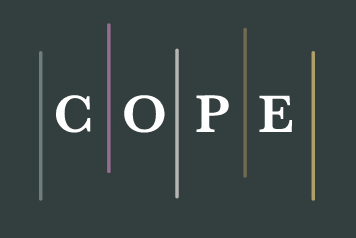REVIEWERS GUIDELINES
Responsibility of Peer Reviewer
Peer reviewer is responsible for critiquing by reading and evaluating manuscripts in the field of expertise, then giving constructive advice and honest feedback to the author of the article submitted. Peer reviewers, discuss the strengths and weaknesses of the article, how to increase the strength and quality of the paper, and evaluate the relevance and authenticity of the manuscript.
Before reviewing, please note the following:
- Is the article requested to be reviewed in accordance with your expertise? If you receive a script that covers the topics that are not appropriate areas of your expertise, please notify the editor as soon as possible. Please recommend an alternative reviewer.
- Do you have the time to review this paper? The review process must be completed within two weeks. If you agree and require a longer period, notify the editor as soon as possible, or suggest an alternative reviewer.
- Is there any potential conflict of interest? Meanwhile, conflicts of interest will not disqualify you as a reviewer, disclose all conflicts of interest to the editor before reviewing. If you have any questions about potential conflicts of interest, do not hesitate to contact the editorial office.
Review Process
When reviewing the article, please consider the following:
- Title: is it clearly illustrating the article?
- Abstract: does it reflect the contents of the article?
- Introduction: does it describe the accuracy of matters submitted by the author and clearly state the problem being considered? Typically, the introduction should summarize the context of the relevant research, and explain the findings of the research or other findings, if any, offered for discussion. This research should explain the experiments, hypotheses and methods.
Content of the Article
In order to determine the originality and suitability for the journal, are there any elements of plagiarism over 20% of this paper field? Quick literature search can use certain tools such as Scopus to see if there are similarities from other parts.
- if the study had been previously done by other authors, it is still eligible for publication?
- is the article is fairly new, fairly deep, and interesting to be published?
- does it contribute to knowledge?
- does the article adhere to the standards of the journal?
- Scope - Is the article in line with the objectives and scope of the journal?
Method
Comprehensive and perfect:
- does the author accurately describe how the data is collected?
- is the theoretical basis or reference used appropriate for this study?
- is the exposure design suitable for the answer to the question?
- is there a decent enough information for you to imitate the research?
- does the article identify following procedures?
- are there any new methods? If there is a new method, does the author explain it in details?
- is there any appropriate sampling?
- have the tools and materials used been adequately explained? and
- does the article exposure describe what type of data is recorded; right in describing the measurement?
Results:
This is where the author must explain the findings in his/her research. It should be clearly laid out and in a logical sequence. You will need to consider whether the appropriate analysis has been carried out; the use of statistical tools? If you have a better statistical tools to be used in this study, notify it, and the interpretation need not to be included in this section.
Discussion and Conclusion:
- are the claims in this section is supported by the fair results and quite reasonable?
- does the author compare the research results with other previous ones?
- do the results of research written in the article contradict the previous theories?
- does the conclusion explain how a better scientific research to be followed-up?
Tables and Pictures:
Is it suitable with the referred explanation by showing data which is easy to to interprete and understanable for the readers?
Writing Styles
- Authors must be critical mostly to the literature systematic review of the issues, which is relevant to the field of study.
- Reviews should be focused on a single topic.
- All exposure should be in English and written in a god and coherent grammar.
- Easy to understand
- Interesting to read
Things that need to be considered:
- Perspective, a unique perspective that describes experiences and situations related to contemporary legal issues in various perspectives and approaches.
Originality Research
- Research policy and observational analysis, it should clarify the feasibility, effectiveness, and implementation on the research results.
- In Practice (case study), The paper should explain the situation regarding the future challenges in contemporary legal issues
Reference
- First Person (Interview)
- Book Reviews
- Insight Technology (Product Review)
Final Review
- All results of the review submitted by reviewers are confidential
- If you want to discuss the article with a colleague, kindly inform the editor
- Do not contact the author directly.
- Ethical issues: (1) Plagiarism: if you suspect the article is mostly plagiarism from other authors, please let the editor knows the details, (2) Fraud: It is very difficult to detect a fraud catogory, but if you suspect the results in the article is not true, please inform the editor
Complete "The Review" by the due date to the editorial office. Your recommendation for the article will be considered when the editor makes a final decision and your honest feedback is highly appreciated.
When you write a comment, please show the part of the comment that is only intended for the editor and parts that can be returned to the author.
Please do not hesitate to contact the editorial office with any questions or problems that you may encounter.
Our journal opens opportunities for the best people to be involved in the development of this journal, so we open opportunities for anyone to become a Reviewer in our journal. Please send your CV and Information on Willingness to be a Reviewer via email: sufyan@pdfaii.org





















